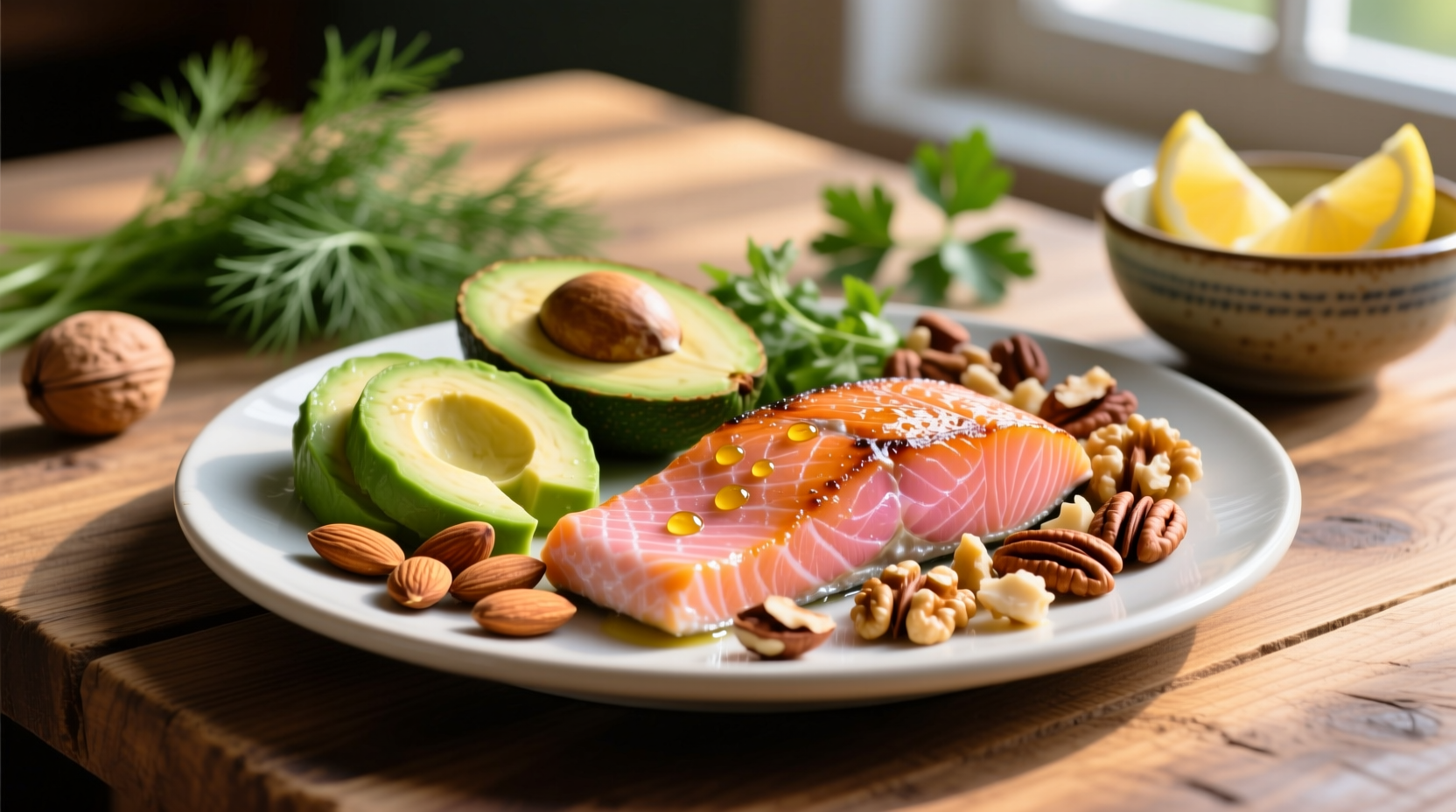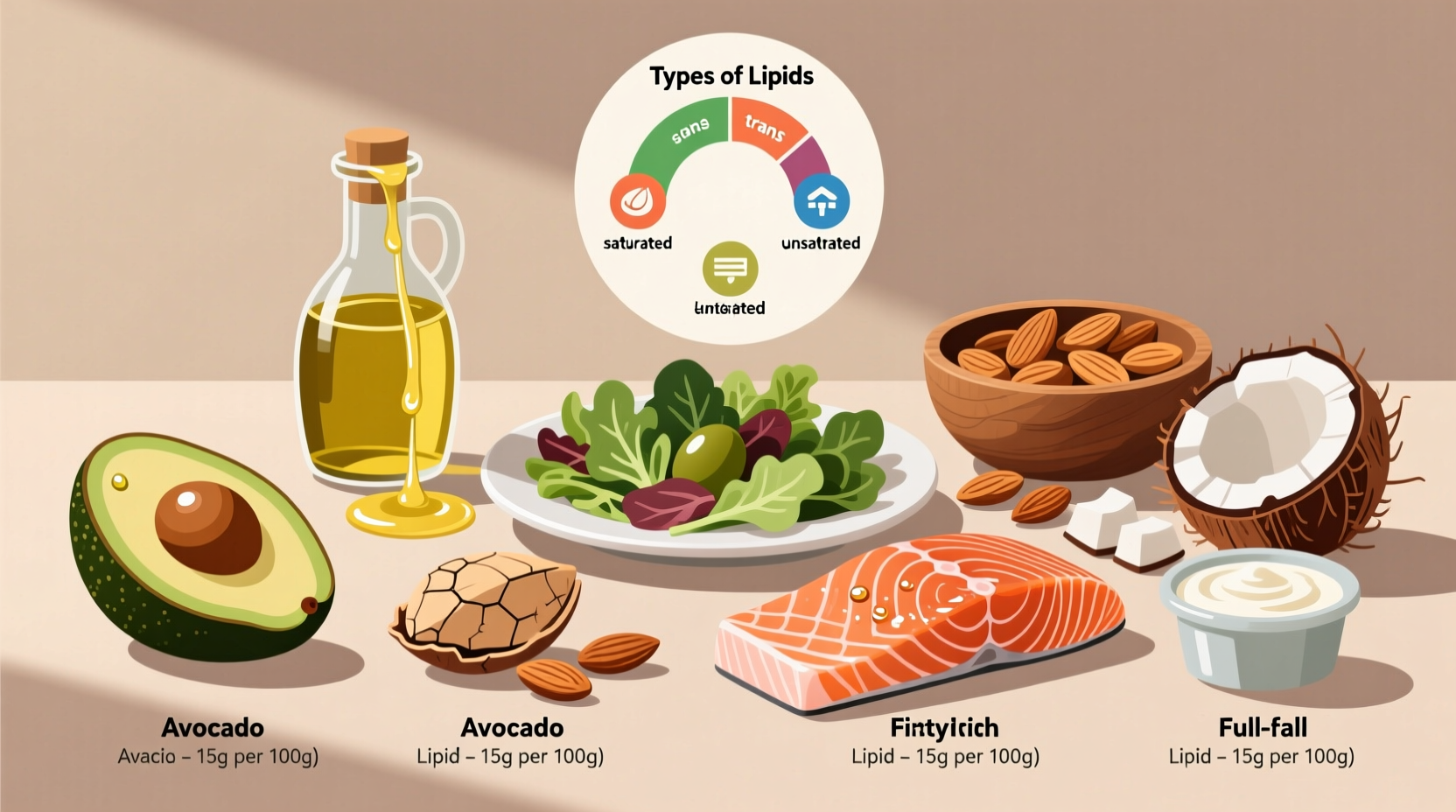Understanding which foods contain lipids is essential for making informed dietary choices. This guide breaks down exactly where lipids appear in your diet, differentiates between beneficial and less healthy types, and provides practical guidance for incorporating them wisely into your meals.
What Exactly Are Lipids and Why Should You Care?
Lipids are organic compounds that include fats, oils, waxes, and related substances. They serve critical functions in your body including energy storage, cell membrane structure, and hormone production. While often misunderstood, lipids are essential nutrients that your body cannot produce in sufficient quantities on its own.
The key isn't avoiding lipids entirely—it's choosing the right types and amounts. Different foods contain varying lipid profiles, and understanding these differences helps you build a balanced diet that supports heart health, brain function, and overall wellbeing.
Where Lipids Naturally Occur: Food Categories Breakdown
Lipids appear in both plant and animal-based foods. Here's where to find them across major food groups:
Plant-Based Lipid Powerhouses
Many plant foods deliver healthy unsaturated fats along with valuable fiber and phytonutrients:
- Avocados: Packed with monounsaturated fats (about 21g per fruit)
- Nuts: Almonds, walnuts, and pistachios provide omega-3 and omega-6 fatty acids
- Seeds: Chia, flax, and pumpkin seeds offer concentrated lipid sources
- Oils: Olive, avocado, and canola oils are predominantly unsaturated fats
- Coconut: Contains medium-chain triglycerides (MCTs) that metabolize differently
Animal-Based Lipid Sources
Animal products contain varying lipid profiles, with some offering particularly beneficial forms:
- Fatty fish: Salmon, mackerel, and sardines rich in omega-3 EPA and DHA
- Eggs: Contain phospholipids important for brain health
- Grass-fed meats: Higher in omega-3s compared to conventionally raised options
- Full-fat dairy: Contains conjugated linoleic acid (CLA) with potential health benefits
| Food | Total Lipids (per 100g) | Primary Lipid Type | Health Notes |
|---|---|---|---|
| Almonds | 49.9g | Monounsaturated | Rich in vitamin E and magnesium |
| Avocado | 15g | Monounsaturated | Supports heart health and nutrient absorption |
| Salmon | 13g | Omega-3 Fatty Acids | Provides EPA and DHA for brain function |
| Olive Oil | 100g | Monounsaturated | Contains anti-inflammatory compounds |
| Butter | 81g | Saturated | Contains butyrate with gut health benefits |
Source: USDA FoodData Central (accessed September 2025)
Healthy vs. Less Healthy Lipid Sources: What Science Tells Us
Not all lipids affect your body the same way. Understanding these differences helps you make smarter choices:
Beneficial Lipids You Should Prioritize
- Monounsaturated fats: Found in olive oil, avocados, and most nuts—associated with reduced heart disease risk
- Polyunsaturated fats: Including omega-3s (fatty fish, flaxseeds) and omega-6s (sunflower seeds, soybean oil)
- Medium-chain triglycerides (MCTs): Found in coconut oil and some dairy—metabolized differently than other fats
Lipids to Consume Mindfully
- Saturated fats: Present in animal products and tropical oils—moderation is key according to American Heart Association guidelines
- Trans fats: Mostly found in processed foods with partially hydrogenated oils—best avoided completely
According to research published in the American Journal of Clinical Nutrition, replacing just 5% of saturated fat calories with unsaturated fats can reduce heart disease risk by up to 25%. The context matters significantly—whole food sources of saturated fats like dairy may have different effects than processed sources.

Practical Guidance for Daily Lipid Consumption
Knowing which foods contain lipids is just the first step. Here's how to apply this knowledge effectively:
Daily Lipid Intake Recommendations
Major health organizations suggest:
- Total fat should comprise 20-35% of daily calories for adults
- Limit saturated fats to less than 10% of daily calories
- Aim for at least 250-500mg of combined EPA and DHA omega-3s daily
Smart Swaps for Healthier Lipid Profiles
- Replace butter with avocado or olive oil in cooking
- Choose fatty fish twice weekly instead of processed meats
- Add a handful of nuts to salads instead of fried croutons
- Use full-fat Greek yogurt instead of sour cream
Special Considerations for Different Dietary Needs
Your lipid requirements may vary based on specific health goals or dietary patterns:
Vegan and Vegetarian Diets
Focus on plant-based sources like flaxseeds, chia seeds, walnuts, and algae oil for omega-3s. Combine complementary plant proteins to ensure complete amino acid profiles alongside healthy fats.
Keto and Low-Carb Diets
These approaches intentionally increase lipid intake (70-80% of calories). Prioritize quality sources like avocado, olive oil, and fatty fish rather than processed high-fat foods.
Heart Health Focus
The Mediterranean diet pattern—which emphasizes olive oil, nuts, and fatty fish—has demonstrated significant cardiovascular benefits in multiple large-scale studies including the PREDIMED trial.
Common Questions About Lipids in Foods
Here are answers to frequently asked questions about lipids in your diet:











 浙公网安备
33010002000092号
浙公网安备
33010002000092号 浙B2-20120091-4
浙B2-20120091-4